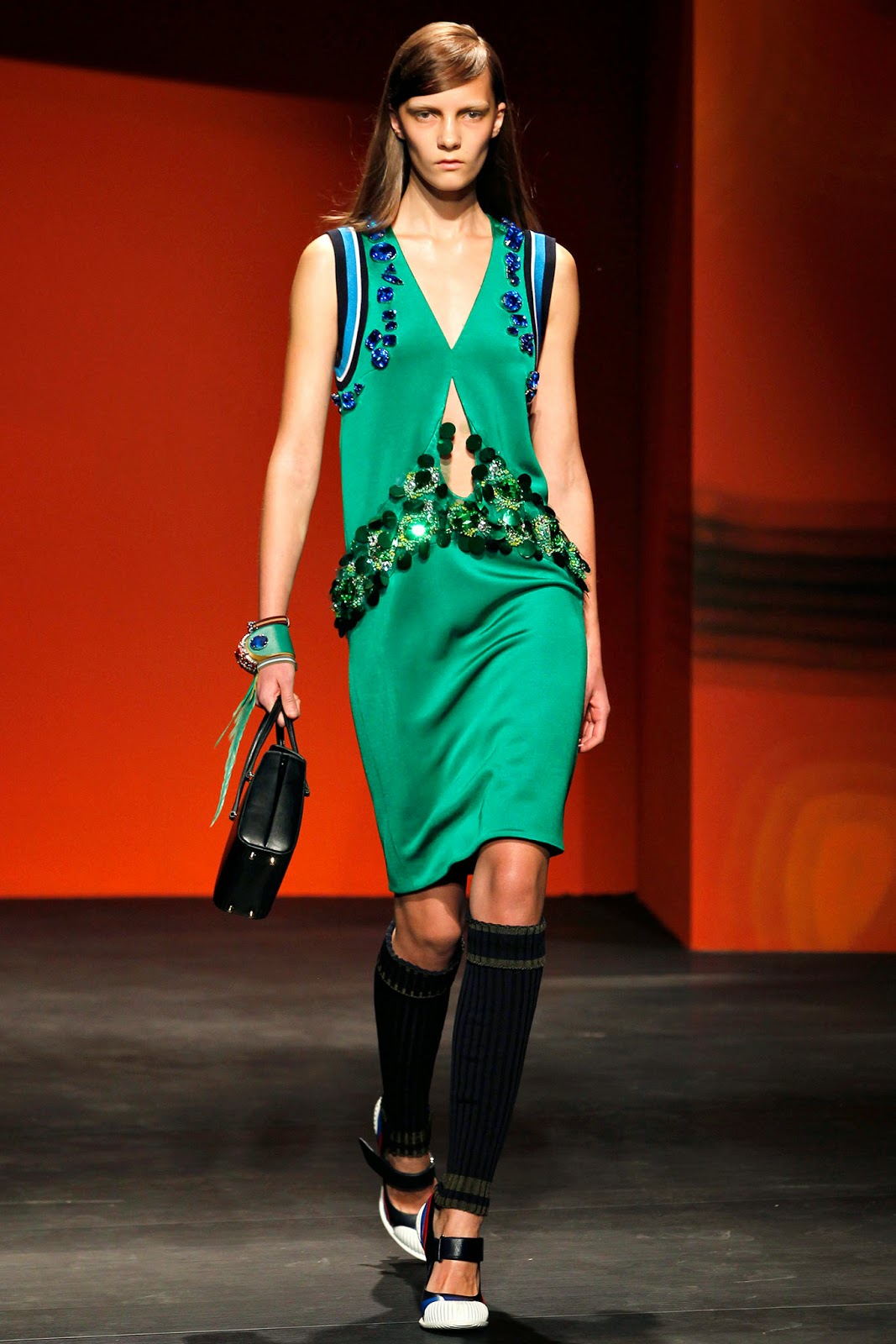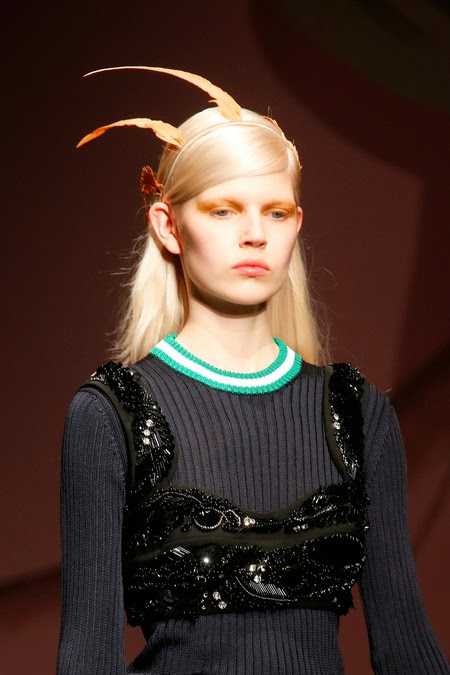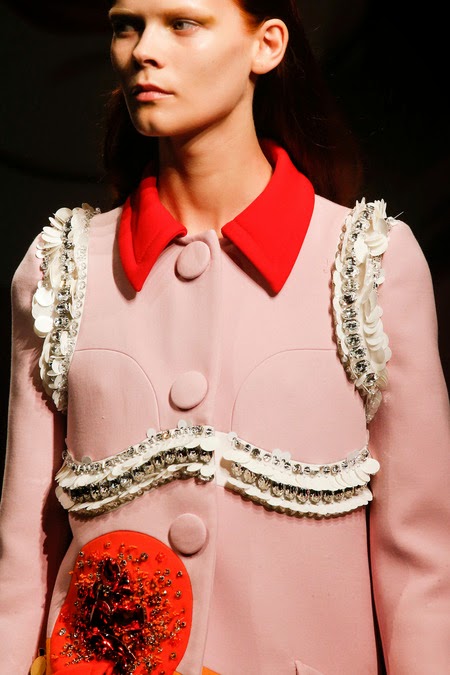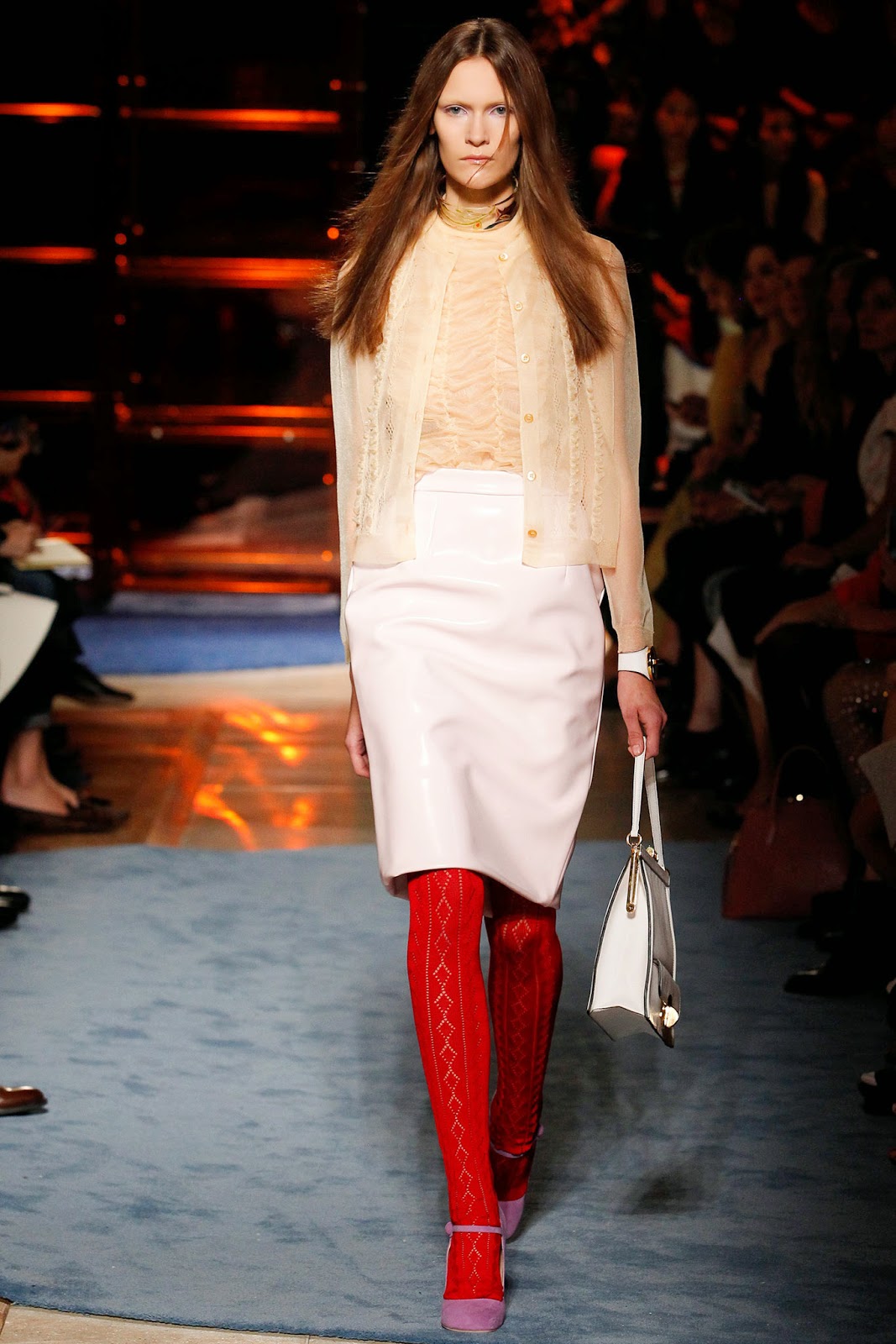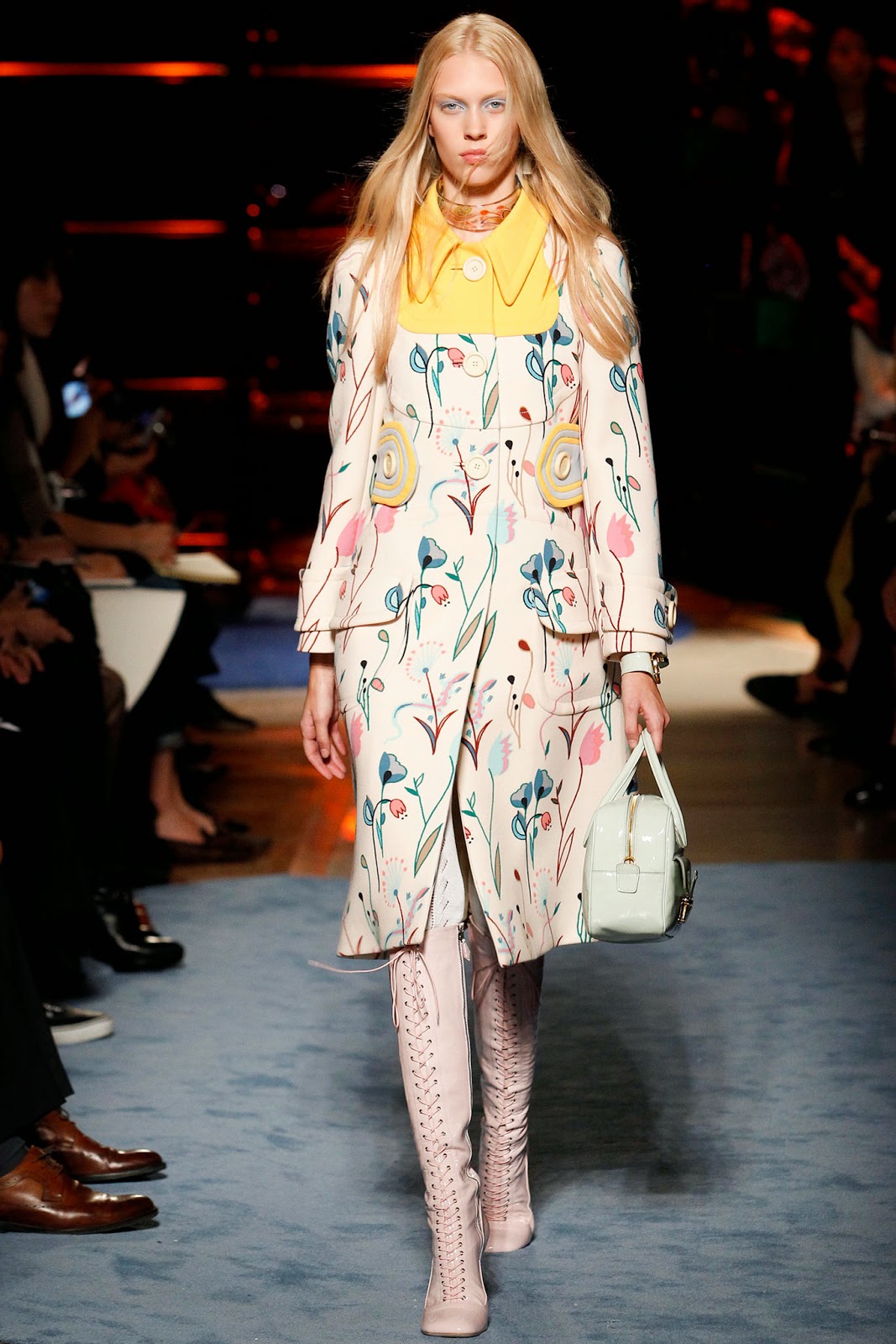Prada, Miu Miu и Marni - бесспорные фавориты весеннего сезона 2014 года. Коллекции, вдохновленные современным искусством в сочетании с классическими силуэтами 1960-х - это и есть настоящее искусство, реальная его форма.
Вдохновением для Prada послужили политические граффити стран Южной Америки, современные художники-муралисты, феминизм и работы Рихарда Линднера; для Miu Miu - иллюстрации Хайнца Эдельманна, винтажные кимоно, отделка в духе ар-деко, а также атмосфера и образ главной героини "Семейки Тененбаум" Уэса Андерсона; для Marni - сочетание спорта и Японии, оригами и незаурядный декор.
Prada
The last time feminism enjoyed any popular currency might have been with
the Riot Grrrls in the early nineties. Miuccia picked up on the
tribalism of that concept. Her models were girl gangs (coded by hair
color and graffitied eyelids); the street/sport element of the
collection also had a gang element. And the murals against which the
show took place - multi-visions of womanhood - echoed the political street
art of LA, Mexico, and South America. Images from those murals were
picked up for use on the clothes and accessories. Oh yes, about those
accessories - the most ladylike handbags in recent Prada
history. Paired with tube socks and Miuccia's take on Tevas. The
disconnect said all you needed to know about the designer's steadfast
refusal to work without reference. Trying to draw lines between this and that
in the collection was a fool's errand. Likewise, attempting to spot the
influence - for instance, the work of mid-century artist Richard Lindner
seemed to inform the spectacular color-blocking. But that might merely
have been one onlooker's personal predilection.
Nevertheless, there was a strong artistic element in the show. The way the clothes were infected by the mural art energized them.
Miu Miu
It was the companion piece to Prada presentation, in its rebellious view of femininity, yet here, it was the clichés and classics of the feminine that were explored and presented as perverse. "Anything that is classic, a repeat in history, a genre of woman or clothes that always comes about," defined Miuccia Prada after her show. "Classics, classics of trash, classics of chic, classics of the good girl, classics of the bad girl."
Prada anticipates, giving people what they want—but not what they think they want.
Prada anticipates, giving people what they want—but not what they think they want.
"I asked myself, What is classic? Why does it become classic? People think that it is romance, but that's not it - it is
something instinctive. Why do women like pink and bows? I am always very
intrigued by what attracts people so much."
Miuccia Prada
Marni
With her sporty visors, platform flip-flops, and bomber jackets, Consuelo Castiglioni did her own expert take on the athletic spirit that has gripped Milan this season (maybe Olympic fever had a particularly long gestation period in Italy). She also had a response to the boom in fashion flora: Her flowers were graphic, Japanese-y, ranging from a "Jack and the Beanstalk" vine to pixelated blossoms to allover petals that spectacularly hardened into jagged flints for the startling green suit at show's end. They were the strongest expression of the organic quality that shaped the collection.
The clothes were at their most seductive when they were quiet: a sage green sarong; origami-folded pants; pieces cut from cotton organza, as ghostly as toiles; the long coats belted over voluminous trousers with huge cuffs. The throwaway glamour of the look evoked, in an entirely nonspecific way, the mood of the Man Ray portrait of Nancy Cunard with her armful of bangles. Aristo languor. Eccentricity, but strength of character. Marni in excelsis.
The clothes were at their most seductive when they were quiet: a sage green sarong; origami-folded pants; pieces cut from cotton organza, as ghostly as toiles; the long coats belted over voluminous trousers with huge cuffs. The throwaway glamour of the look evoked, in an entirely nonspecific way, the mood of the Man Ray portrait of Nancy Cunard with her armful of bangles. Aristo languor. Eccentricity, but strength of character. Marni in excelsis.
Tim Blanks for STYLE.COM











